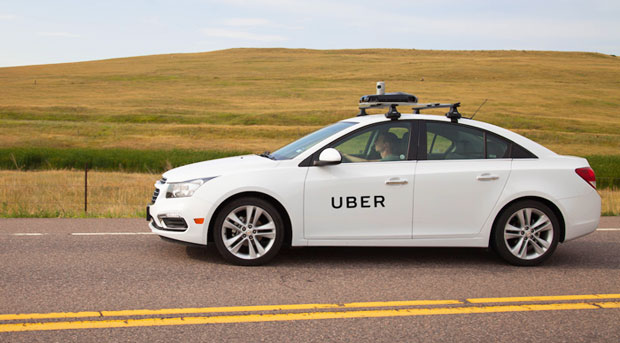With an eye on its future, Uber last week announced it was increasing its investment in mapping.
“The ongoing need for maps tailored to the Uber experience is why we’re doubling down on our investment in mapping,” said Brian McClendon, Uber’s vice president of advanced technologies and former vice president of Google Maps.
McClendon didn’t reveal how much Uber will invest in its mapping initiative, but news reports have pegged the figure at US$500 million.
“We are declining to comment on the $500 million number,” Uber spokesperson Molly Spaeth told TechNewsWorld.
Uber began putting mapping cars on the road last year, and this summer it expanded the program to Mexico.
“Existing maps are a good starting point, but some information isn’t that relevant to Uber, like ocean topography. There are other things we need to know a lot more about, like traffic patterns and precise pickup and dropoff locations,” noted McClendon.
“Moreover, we need to be able to provide a seamless experience in parts of the world where there aren’t detailed maps — or street signs,” he pointed out.
Sensible Move
Further investment in maps makes sense for Uber, said Trip Chowdhry, managing director for equity research at Global Equities Research.
“They don’t need to provide the all-things-to-all-people kind of maps like Google,” he told TechNewsWorld. “It makes sense for Uber to have an alternative strategy. It needs highly targeted maps.”
Those maps need to support tracking of vehicles, estimating times to pickup and dropoff, and pinpointing caller locations, he added.
“It’s a different use case than what Google and Apple are doing,” Chowdhry emphasized.
Late to the Dance
Uber should have expanded its maps program before now, argued Roger C. Lanctot, associate director for the global automotive practice at Strategy Analytics.
“If anything, they’re a little late with this,” he told TechNewsWorld. “They’ve had the advantage of all these vehicles wandering around all these cities around the world, so it only makes sense to start collecting data from those vehicles.”
Greater investment in maps makes even more sense when you consider Uber’s intentions to be a player in the self-driving vehicle space.
“When you’re going to get rid of the driver entirely, you’re going to need a map,” Lanctot observed. “It looks like they’ve determined it’s in their interest to create their own maps.”
Valuable Data
Automobiles are becoming generators of valuable data, and mapping is a way to capture some of that data, said Jim McGregor, principal analyst at Tirias Research.
“As we start building out this IoT era, the data that’s used for things like autonomous cars is going to be extremely valuable,” he told TechNewsWorld.
“Companies that have that data are going to want to leverage it more and more,” McGregor pointed out. “Uber is thinking the data from its drivers is something valuable to have as the industry changes.”
Although the data Uber will be gathering with its expanded maps program has intrinsic value to the company, its resale value remains unknown.
“Whether Uber can leverage the data enough to pay for the investment it’s making in mapping, that’s hard to tell,” McGregor cautioned.
Justifying Market Value
With its move into autonomous vehicles, and now mapping, Uber is starting to spread its wings.
“They’re expanding their strategy,” noted Bob O’Donnell, chief analyst at Technalysis Research.
“It’s not just a company being valued at some crazy level. Now they’ve got investments in other firms, and they’re making investments in technology,” he explained. “Mapping is part of a plan to extend the company beyond a service that other people could replicate.”
The mapping announcement came just days before Uber announced plans to merge its Chinese operations with competitor Didi Chuxing.
Uber will retain a 20 percent stake in the newly formed company, which has an estimated worth of $35 billion, according to news reports.
“They were losing too much money in China,” Strategy Analytics’ Lanctot said.
“There’s a lot more upside to being able to solve the automated driving problem than there is to solving China,” he observed. “A lot of people have lost a lot money trying to figure out China.”























































Uber skims too much the top of compensation for it’s driver contractors. Yea, Uber is great if your a rider, a Uber Executive or an investor. The core of Uber the driver contractor benefits little. Uber raises percentage of deductions and lowers rates at the same time. Feel sorry for the driver who works for peanuts.